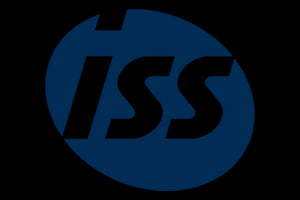About Us
Dust at work or at home can be a silent threat to the health of your employees and family.
Dust Arrest is dedicated to ensuring we can all breath easy by providing a range of innovate dust management products from leading brand MAXVAC. From High Performance Vacuum Systems, with attachments for a range of Dust Management Situations, to Dustblockers and Air Movement Fans, you can find exactly what you need with Dust Arrest.
- We are the number 1 UK distributor of the MAXVAC Dust Management Range
- We provide site surveys to determine your individual requirements
- We keep up to date with ever-changing dust management regulations and technology
- We provide equipment to deal with a variety of dust threats, including silica, wood, grain, and flour
Dust danger: the impact on human health
Dust poses several threats to human health, which why the UK’s Health and Safety Executive requires that places of work adhere to strict regulations to minimise its effects, or face the legal consequences. Let’s take a look at the four major ways dust can harm.
- Breathing dust in
Depending on the size of the dust particles, they can cause damage to the nose, mouth, throat, windpipe or lungs. These effects can sometimes take years to appear and include inflammation, asthma, and lung cancers, such as mesothelioma.
- Swallowing dust
Breathing in dust can sometimes mean it gets trapped in mucus lining the mouth and throat. When this is swallowed it can irritate the gut. If it gets into the bloodstream it can reach other organs and cause damage throughout the body.
- Dust in the eyes
Dust that enters the eye can cause irritation, redness, soreness and inflammation, such as conjunctivitis.
- Dust on the skin
Continued exposure to dust can cause skin irritation, ulcers and rashes. The skin disease dermatitis can also result from dust exposure.
There are many processes that produce dust, including drilling, milling, grinding and sawing. The severity of the harmful effects of dust will depend on type of dust produced. Once you have an idea of the type of dust you’re dealing with, you can select the right kind of vacuum to safely and effectively remove it.
Types of dust: size matters
Dust Arrest supplies a comprehensive range of MaxVac vacuum cleaners, which are equipped with powerful extractors, to tackle a range of dust particles. Each extractor class is specially designed to filter dust particles of a range of sizes:
- Dust Class L extractors
These tackle low hazardous dust, filtering out 99% of all dust that is extracted. The air that passes through this system is left with only dust particles weighing less than 1mg.
- Dust Class M extractors
These tackle medium hazardous dust, filtering out 99.95% of all dust that is extracted. The air that passes through this system is left with only dust particles weighing less than 0.1mg.
- Dust Class H extractors
These tackle high hazardous dust, filtering out 99.997% of all dust that is extracted. The air that passes through this system is cleared of the finest dust particles. If you are dealing with MDF and asbestos dust, which is particularly harmful due to its fine nature, then this is the extractor you will need.
Types of dust: beyond asbestos
At the mention of the harmful effects of dust, asbestos is often top of the list of dangerous dust particles. However exposure to dust is not restricted to the construction industry alone. Here are some forms of dust that may sound innocuous but can nonetheless cause harm:
- Flour
The second most common cause of occupational asthma is flour dust, affecting works in bakeries, flourmills, and kitchens. This is made worse by additives used when working with flour, such as amylase. Flour dust can also cause the skin disease dermatitis.
- Grain
Grain dust is a major cause of occupational asthma and other respiratory disorders. Those working in agriculture have double the national average of asthma. This is down to exposure to grain dust during harvesting, drying, handling, storage or processing of barley, wheat, oats, maize, rye, rice or sorghum. This can involve exposure to associated contaminants or additives, such as bacteria, endotoxins, fungal spores, insects, insect debris, and pesticide residues.
- Silica
Dust from rocks, sand, clay, bricks, and concrete can produce silica dust when cut, sanded, carved, or similarly handled. Silica dust can be so fine that it enters deep into the lungs, where it can damage the tissue and lead to respiratory disease. This fine dust, called respirable crystalline silica (RCS), is too fine to even be seen under normal lighting.
- Wood
Wood dust can cause a range of respiratory problems, including asthma. Carpenters and joiners are consequently four times more likely to develop asthma than other UK workers. Hardwood dust and formaldehyde are also known to be cancer-causing agents, with hardwood dust causing a rare form of nose cancer.
This list is not exhaustive and there are many other substances that can produce harmful dust. One thing is clear, whether in a bakery or a building site, dust can damage human health. Dust management is key to avoiding these highly preventable consequences.
Keep dust levels down with Dustblockers
Bakeries, schools, manufacturing plants, hospitals, offices; the list of where dust resides is endless. Just because you can’t see it, doesn’t mean it isn’t there. Keeping dust levels as low as possible will help protect your employees, customers, family and friends from the detrimental health effects of dust. This is where the Dustblocker Pro range can help, giving you the power to get your dust levels under control and within EU recommendations.
Whether trying to keep flour dust out of the air in bakeries, lessen construction dust at a building site or to reduce the cleaning needed in hospital wards or offices, Dustblockers are the go-to solution.
With Dustblocker filtered air you can breathe in anywhere from 10 to 100 times fewer dust particles. By creating a circulating air stream in closed rooms or halls, fine dust particles have no way of escaping the Dustblocker filters. From dust and pollen to spores and bacteria, Dustblockers can remove them all, leaving you with clean air. What’s more, they are designed to work with minimal space and energy requirements.
















